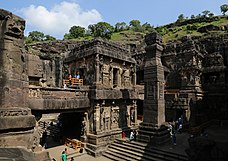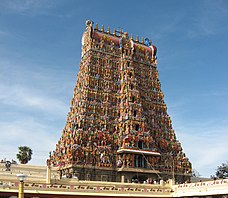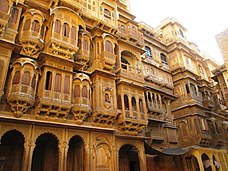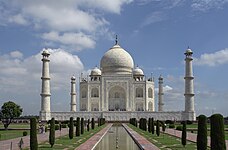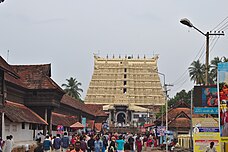
Back عمارة الهند Arabic Индийска архитектура Bulgarian ভারতের স্থাপত্য Bengali/Bangla Arquitectura índia Catalan Indische Architektur German Arkitekturo de Hindio Esperanto Arquitectura de la India Spanish India arhitektuur Estonian Indiako arkitektura Basque معماری هندی Persian
Indian architecture is rooted in the history, culture, and religion of India. Among several architectural styles and traditions, the best-known include the many varieties of Hindu temple architecture and Indo-Islamic architecture, especially Rajput architecture, Mughal architecture, South Indian architecture, and Indo-Saracenic architecture. Early Indian architecture was made from wood, which did not survive due to rotting and instability in the structures. Instead, the earliest existing architecture are made with Indian rock-cut architecture, including many Buddhist, Hindu, and Jain temples.
The Hindu temple architecture is divided into the Dravidian style of southern India and the Nagara style of northern India, with other regional styles. Housing styles also vary between regions, depending on climate.
The first major Islamic kingdom in India was the Delhi Sultanate, which led to the development of Indo-Islamic architecture, combining Indian and Islamic features. The rule of the Mughal Empire, when Mughal architecture evolved, is regarded as the zenith of Indo-Islamic architecture, with the Taj Mahal being the high point of their contribution. Indo-Islamic architecture influenced the Rajput and Sikh styles as well.
During the British colonial period, European styles including Neoclassical, Gothic Revival, and Baroque became prevalent across India. The amalgamation of Indo-Islamic and European styles led to a new style, known as the Indo-Saracenic style. After India's independence, modernist ideas spread among Indian architects as a way of progressing from the colonial culture. Le Corbusier - who designed the city of Chandigarh - influenced a generation of architects towards modernism in the 20th century. The economic reforms of 1991 further bolstered the urban architecture of India as the country became more integrated with the world's economy. Traditional Vastu Shastra remains influential in India's architecture in the contemporary era.[1]
- ^ See Raj Jadhav, pp. 7–13 in Modern Traditions: Contemporary Architecture in India.
